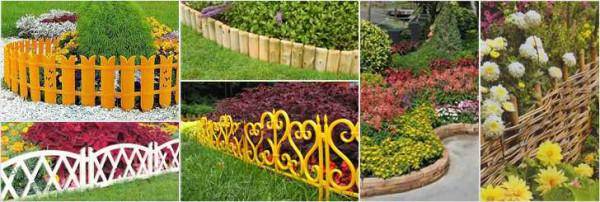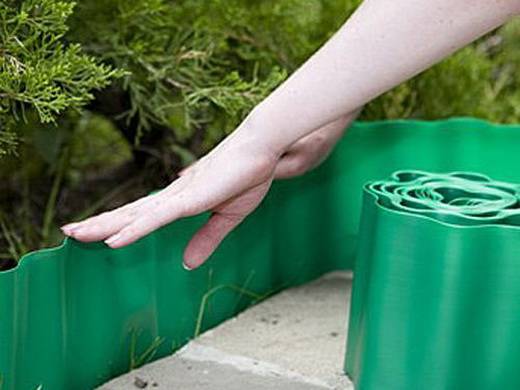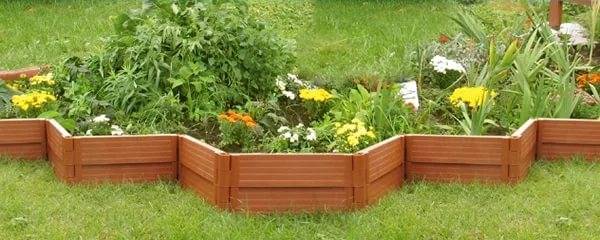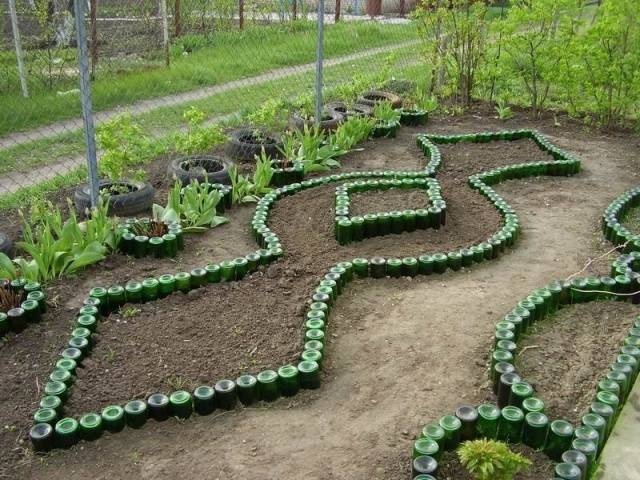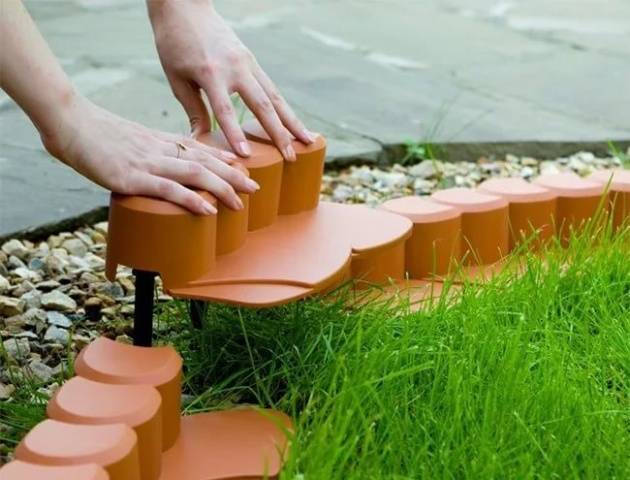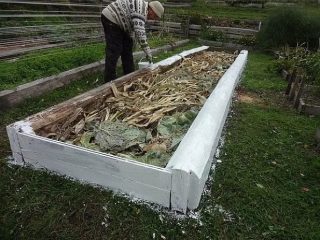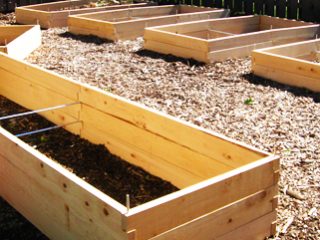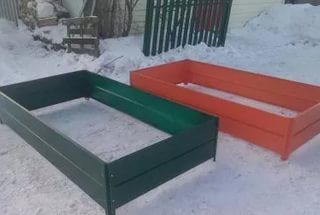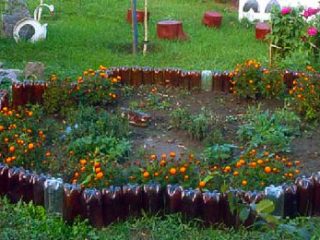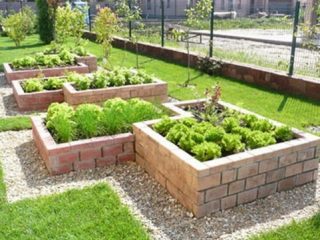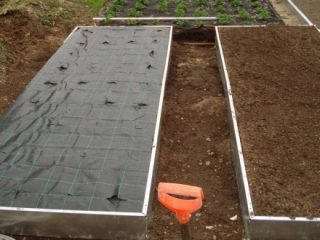Content
Many summer residents make fences for garden beds from scrap materials, lying in the yard. However, when it comes to a flower garden, lawn or the same bed, but in a visible place near the house, then you want to make a beautiful fence. Forged products are very expensive, carved wood is short-lived, but plastic fences for garden beds will be just right.
What is the popularity of plastic fencing?
Modern life is probably difficult to imagine without plastic. Many finishing materials, children's toys, household items and much more are made from different types of plastics. They even make fences for flower beds from plastic. Let's figure out what is the advantage of plastic fences and borders, which are in wide demand among consumers:
- A plastic garden fence is very practical. The light weight of the product allows it to be successfully used on loose soil. Soil can be poured high onto a bed made of a solid plastic board, and if necessary, the height of the sides can be increased by adding new elements.
- The consumer has the opportunity to choose plastic fences and borders of any design.From plastic elements you can make a bed of any curved shape.
- Plastic fences for flower beds and beds are resistant to corrosion and do not collapse for many years from exposure to water. PVC board 100% retains moisture inside the bed.
- High-quality plastic does not fade in the sun. The product will retain its original color after prolonged exposure to UV rays.
- A plastic fence of any configuration can be easily installed around the perimeter of the garden bed, and just as easily dismantled if necessary to move it to another place.
- From different models of fences and borders, the owner of a suburban area has the opportunity to make the landscape design more attractive. Plastic elements divide the yard into zones, separate sidewalk paths, and focus attention on certain objects.
- To install a plastic garden fencing, you do not have to dig a deep trench or build a foundation. Many products are simply stuck into the ground with stakes. If you have to bury the border, then it is enough to make a small depression in the ground with a shovel.
The popularity of plastic fencing comes from its low cost. The product is available to any consumer.
Review of plastic fencing
The modern market offers consumers a large selection of plastic borders for garden beds, differing in shape, color, installation method and other characteristics. Conventionally, plastic fencing is divided into several types.
Border tape
By the name you can determine that the product is presented in the form of a tape from which borders are installed. Flexible material allows you to give the bed the outline of any shape. They produce ribbons with a width of 10 to 50 cm. This is enough for arranging a raised bed.
Any embankment fenced with tape will never be washed away by water. Even after heavy rains, the bed will retain its original appearance, and all the plants growing on it. Border tape is sold in rolls of different lengths, but usually no more than 50 m. Buying one roll may be enough to fence all the beds in your summer cottage. In addition, its cost is low.
Wide tapes are used to protect bushes from growing to the side, and narrow tapes are used to zone lawns, separate embankment paths, etc. Due to its flexibility, border tape is in great demand among designers. They create fancy flower beds of different shapes with curved lines. Volumetric multi-tiered flower beds made from ribbons of different widths are very popular among gardeners. Moreover, the sides are made of stripes of different colors. Tapes of dark colors are installed on the site to create a calm atmosphere. If you need to focus on some object, use bright borders.
Installing a border strip will not be particularly difficult. The product comes with a set of stakes and instructions. To install it, dig a small depression around the perimeter of the bed. It is advisable to tension the tape well. This will require two people. After installing the fence in the groove, reinforce it with stakes, after which the edges are compacted with earth. The edges of the lena are fastened together with a stapler. The resulting plastic fencing made from flexible tape will last for many years, and if necessary, it can simply be removed from the ground.
Plastic garden board
Curb tape has many positive qualities, but is still unable to replace a real rigid fence.A bed made of plastic boards can withstand high soil pressure and is not afraid of even the blow of a hoe or shovel. Summer residents also call such fencing elements a garden board.
The appearance of the product resembles panels of different lengths, but no more than 3 m. The height of the board is 150 mm. The ends are equipped with grooves and fastenings that allow for quick assembly of fencing of any size. Plastic panels are used not only for arranging beds and flower beds. Sandboxes at playgrounds, recreation areas and other objects are fenced off with boards. Plastic panels are very durable and have an attractive smooth surface. The manufacturer produces products in different colors, which makes it possible to produce fences for garden beds from plastic panels in the form of compositions with thoughtful patterns.
Garden plastic board is ideal for fencing greenhouses and greenhouses. A frame and covering material can be attached to the panels. A fence made of boards prevents the soil from spreading and is not afraid of long-term exposure to moisture and temperature changes. The disadvantage of garden boards is still the high cost of the product. A garden bed with panels will cost a summer resident a pretty penny.
The fence made from garden boards is assembled according to the manufacturer's instructions. Plastic stakes are sold complete with the panels. During the assembly of the garden bed fence, the boards are fastened together with end grooves and protruding fasteners. The assembled board is placed on the ground, after which it is nailed down with plastic stakes. To prevent soil from getting into the fastening points, the holes are covered with decorative plugs. The assembled fence made from garden boards looks very aesthetically pleasing.
Plastic fencing made from a garden kit
A garden designer will help you assemble beds from plastic panels with your own hands. This type of plastic border allows you to fold a fence of any size and shape. The constructor comes with a set of plastic parts. All elements are connected according to the attached user instructions. The result is a solid board, ready to strengthen the bed.
You can use a plastic constructor to create a large or small fence. The light weight of the finished board allows it to be installed on loose and loose soil. The solid panel prevents soil from spilling and washing away during rain. The constructor is ideal for assembling multi-tiered flower beds and beds. Moreover, each fence can be given any curved shape. The parts of the garden set do not collapse in a humid environment, do not fade in the sun and have a long service life.
Making your own plastic garden fencing
Undoubtedly, any factory-made plastic fencing is comfortable, beautiful and has a long service life. Despite all the advantages, you will have to pay a considerable amount to purchase them. What to do if there are a lot of beds, and there is also a possibility of thieves entering the dacha during non-residential periods? The way out of the situation will be homemade fences for garden beds. But I don’t want to take any material, especially one that contaminates the soil or quickly rots.
PET bottles with a capacity of 1.5–2.5 liters will help you create a homemade plastic fence. At a landfill you can collect a huge number of containers of different colors, but preferably of the same size.
Having collected a large supply of plastic bottles, we begin to arrange the fencing of the garden bed:
- Before burying plastic bottles in the ground, they must be prepared. For each container, use a sharp knife to cut off the narrow part where the neck is located. It is desirable that all bottles are the same length. You don’t have to cut the neck, but then it will be more difficult to fill the containers with soil. Although this choice is better left to the owner.
- All cut bottles are covered with damp soil and compacted well. If the necks are not cut off, then backfilling will have to be done with loose soil, but preferably with sand. After filling all the containers, dig a ditch around the perimeter of the future bed. If dry sand was poured into the bottle, the necks must be screwed with stoppers. This will prevent the filler from spilling when the container is turned over during installation.
- Bottles filled with soil or sand are turned upside down one by one and placed in a dug groove. To make the fence even, stakes are driven into the corners of the bed, and a construction cord is pulled between them. It is easier to display each bottle along the outlined contour.
- Upon completion of the installation of all plastic containers, the resulting voids in the ditch are compacted with the addition of moist soil.
Homemade plastic garden bed fencing is ready for use. You can pour soil inside and plant plants.
The video talks about raised beds made with your own hands:
Where else are plastic fencing used?
Plastic fences are lightweight, do not corrode, have an aesthetic appearance and are easy to install.All these positive qualities determine a wide range of uses for plastic borders. Often such fences can be found on sports grounds. Small construction sites can be temporarily blocked by plastic boards. Plastic elements are effectively used for temporary fencing of building materials.
In general, plastic fences and borders are widely in demand in any field of human activity where it is necessary to install a beautiful and reliable fence.
